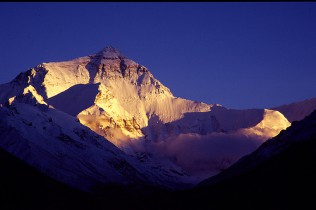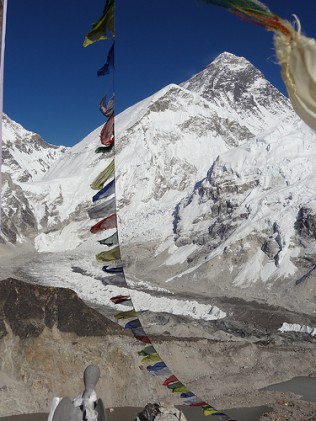
Summiting the world’s highest peak is a feat unto itself, but for many who have paid in the range of 35,000 to 50,000 US dollars, the ascent of Mount Everest can be deadly not only because of the harsh conditions but also because of overcrowding. In recent years, the popularity has grown so much that last May hundreds of people attempted a summit climb in a single weekend.
Despite ideal weather conditions, that weekend turned tragic as four climbers died while descending the mountain. One of the survivors told The Telegraph that after his group reached the summit, they got stuck in a traffic jam at the Hillary Step, a tricky rock wall that climbers must ascend and descend on fixed ropes. They waited for four hours, getting snow blind and using up much of their bottled oxygen. Later, as the group was descending toward the South Col, one of the men, 44-year-old Song Won-bin from South Korea, collapsed and died. The other three climbers to die that weekend were 61-year-old German Eberhard Schaaf, 33-year-old Nepali-born Canadian Shriya Shah-Klorfine and 55-year-old Chinese climber Ha Wenyi.
In the May incident, the climbers died of exhaustion and altitude sickness, Discovery News reported. The article raised the question of whether the overcrowding issue can be fixed by regulating the number of permits given out to climbers. However, some mountaineers think that what’s needed is not so much regulations, but greater responsibility on the part of climbers and expedition teams to know when not to go.

“There is nothing we can do to control the overcrowding. We’ve made some suggestions to the Ministry of Nepal but it all comes down to them generating as much revenue as they can from the climbing industry,” said Becky Rippel, high altitude mountain guide and co-owner of Peak Freaks. “It’s completely out of our hands. On the smaller mountains we’ve been moving around changing peaks when things start to get too busy for comfort.”
With the popularity of Everest likely to continue, expedition companies operating are doing their best to come up with ways to make climbs safer. Peak Freaks limits the size of expedition teams to 12 participants. “We do this to offer less impact and a safer environment for our climbers and Sherpas,” Rippel said.
Expanding the time period for summit attempts would also help. “The only way to manage more climbers on the mountain is to fix the route earlier, which we will do in 2013, to provide more opportunities to others for potential good weather summit windows,” said Garrett Madison, expedition manager and senior guide at Alpine Ascents International.
Along with overcrowding, some expedition teams face extra danger due to the lack of enough experienced guides. There are no regulations stating a minimum number of guides per climber, and depending on the guide companies it can be anywhere between one guide for each climber to one guide for more than seven climbers. Some expeditions have no guides at also, just Sherpas who may not have enough training or communication skills to lead the team safely up and back down the mountain. The four deaths that happened in that one weekend in May were part of teams with no trained guides, according to Discovery News.
“Regarding the deaths which occurred on the north side of Everest this spring, it appears all these climbers were either solo or with limited Sherpa support but certainly without Western guides and climbing as independent climbers basically on a permit with base camp support only,” a representative of the expedition company SummitClimb told Ethical Traveler.
SummitClimb does not endorse such expeditions, and even their more basic climbs have both climbing Sherpas and Western guides trained to evaluate climbing conditions. “Our client safety is of paramount importance and if we felt that climbing to the summit would in any way be unsafe then we would abandon the expedition. The mountains are always there and can be climbed again at a later date.”
Read Ethical Traveler's Reprint Policy.
